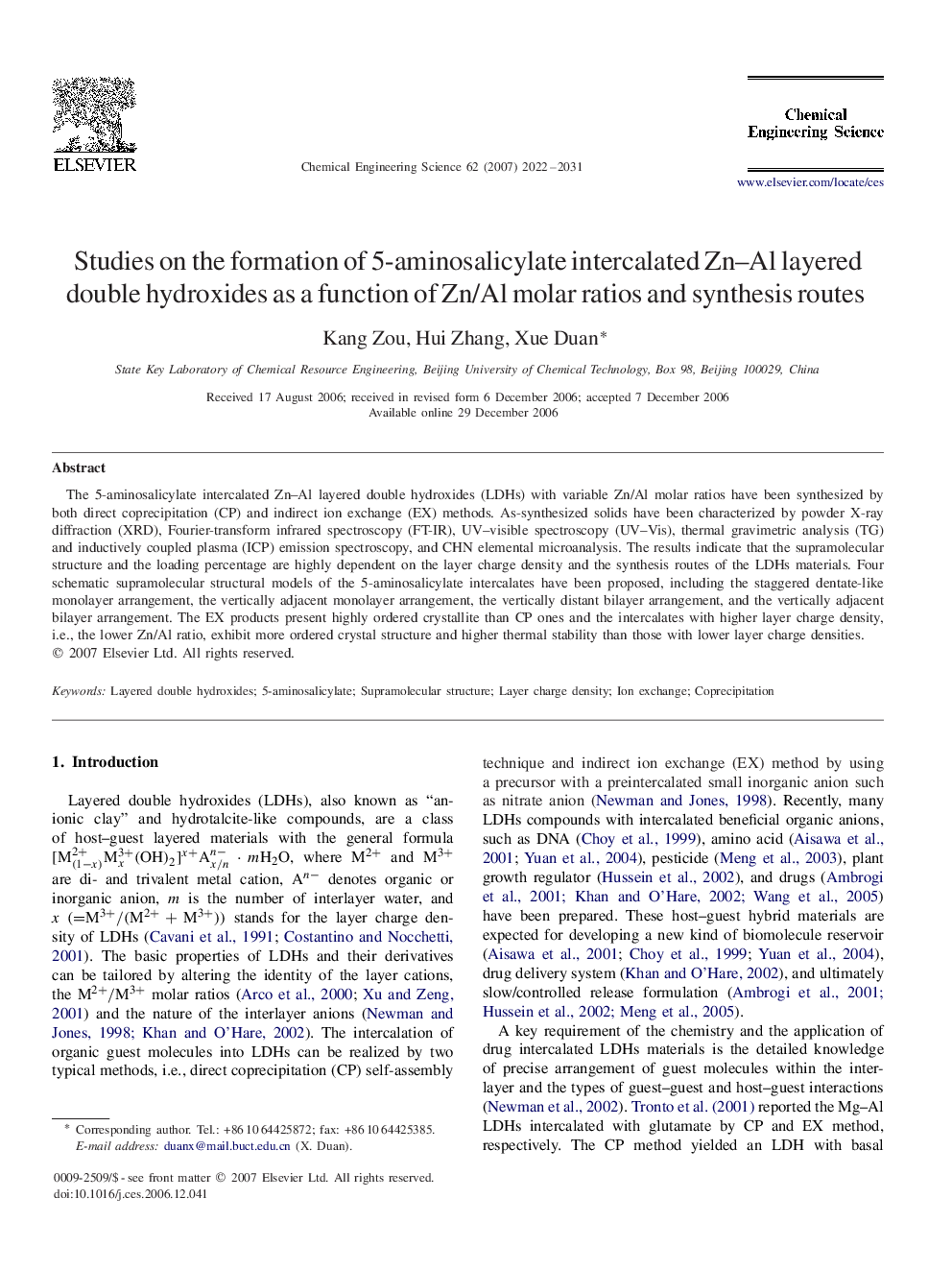| Article ID | Journal | Published Year | Pages | File Type |
|---|---|---|---|---|
| 160192 | Chemical Engineering Science | 2007 | 10 Pages |
The 5-aminosalicylate intercalated Zn–Al layered double hydroxides (LDHs) with variable Zn/Al molar ratios have been synthesized by both direct coprecipitation (CP) and indirect ion exchange (EX) methods. As-synthesized solids have been characterized by powder X-ray diffraction (XRD), Fourier-transform infrared spectroscopy (FT-IR), UV–visible spectroscopy (UV–Vis), thermal gravimetric analysis (TG) and inductively coupled plasma (ICP) emission spectroscopy, and CHN elemental microanalysis. The results indicate that the supramolecular structure and the loading percentage are highly dependent on the layer charge density and the synthesis routes of the LDHs materials. Four schematic supramolecular structural models of the 5-aminosalicylate intercalates have been proposed, including the staggered dentate-like monolayer arrangement, the vertically adjacent monolayer arrangement, the vertically distant bilayer arrangement, and the vertically adjacent bilayer arrangement. The EX products present highly ordered crystallite than CP ones and the intercalates with higher layer charge density, i.e., the lower Zn/Al ratio, exhibit more ordered crystal structure and higher thermal stability than those with lower layer charge densities.
